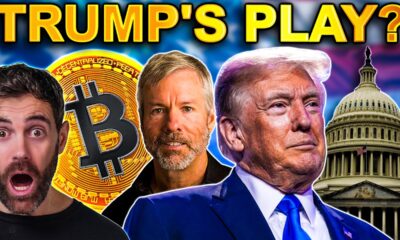NFTs
Token Supremacy Presents a Sensationalized Version of the NFT Boom
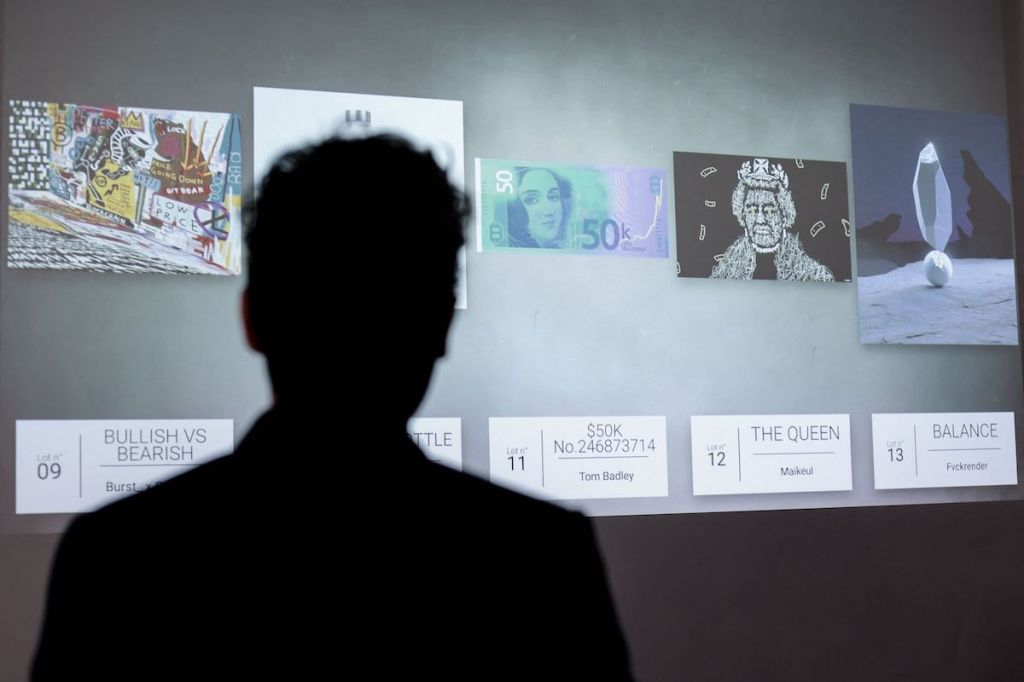
Art and finance have salacious appeal, as writers from Danielle Steele to Steve Martin have found, the latter stating tongue-in-cheek toward the end of his novel, An Object of Beauty: “Art was still art whether it was tied to money or not.” Yet Rembrandt died in penury, as New York Times reporter Zachary Small recounts in the introduction to Token Supremacy, their newly published book on the 2021 NFT market bubble and its aftermath. Small notes this while describing the infamous 17th-century Dutch tulipomania, an apt comparison to the NFT boom, and one that artist Anna Ridler, represented by Nagel Draxler, first made in her video series Mosaic Virus (2018 and 2019), though neither she nor her work are mentioned in Small’s book. Several artists making work about or with blockchain in the technology’s early years addressed its potential and the problems with its underlying financial model: Simon de la Rouviere, Simon Denny, Sarah Friend, Rhea Myers, Martin Nadal, César Andaluz, and Martin Lukas Ostachowski, to name a few. Small’s book recounts the two years of media-driven interest and inflation, but omits this backstory and wider scope, limiting readers’ understanding of what that moment was truly about, and thus, where it might be going.
Related Articles
Across the book’s 12 chapters, Small guides readers through the roller coaster of NFT hype, and its associations with the boom-and-bust and regulatory concerns of cryptocurrencies. Tyler Hobbs, Mike Winkelmann (aka Beeple), Justin Aversano, and Erick Calderon, the founder of generative art platform Art Blocks, are Small’s protagonists of the 2021 boom, taking readers from Christie’s record-breaking auction of Beeple’s Everydays: The First 5,000 Days to the unexpected synchrony, a year and half later, between Art Blocks’ Open House in Marfa, Texas and Sam Bankman-Fried’s resignation from FTX, the now-bankrupt crypto exchange and hedge fund.
Small’s telling contains engaging anecdotes and the occasional digression to art historical antecedents—the evolution of photography and Donald Judd settling in Marfa—that provide obvious cultural references to anchor readers in this emergent technology. But for someone who participated in and was a close observer of the NFT boom, Token Supremacy seems mostly to reiterate popular magazine articles without providing significant new research or insights. This deficiency is underscored by Small’s goal, outlined in the introduction, to contribute to the history of cultural economics and the dynamics of speculation. There is much to say about the gnarly web that links artists, platforms, hedge funds, venture capitalism, regulation, and global finance, but it is not to be found in the four case studies and breezily recounted recent history that form this book. The shortfall between the book’s stated aims and its execution led me to wonder if Token Supremacy had not tried to fulfill the demands of two audiences: to present the art world’s particular usury in its dealings with crypto for those with some knowledge of both art and crypto and, at the same time, provide a Vanity Fair-esque retelling of NFTs that could credibly be a beach read.
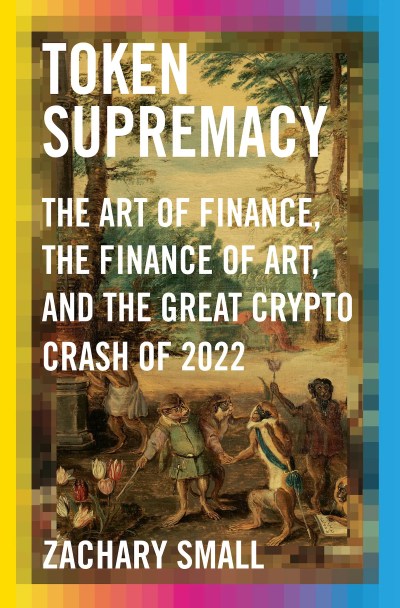
COURTESY OF KNOPF
The demands of the latter lead Small to truncate important events, eliding their deeper complexities. For example, in the book’s first chapter, while Small recounts the desires of and the difficulties faced by the Christie’s employees driving the Beeple auction in March, they bypass telling how, several months earlier, Metapurse, the crypto-focused venture capital fund, sold fractionalized ownership stakes in 20 Beeple works as part of its B20 coin investment scheme. It isn’t mere trivia that Metapurse was then the buyer of Everydays for nearly $70 million, but material to why they had a vested interest in driving up Beeple’s prices. And while Everydays served as a kind of advertisement for B20, those works were not added to the coin investment scheme, as initially reported by Amy Castor. The B20 coin and Everydays would be an ideal case study in speculative tokenomics, and might have been used to explain how insider knowledge and “rug pulls” (where a group draws investors, only to abandon the project) operate within NFTs and crypto markets. Small, however, does not illuminate this connection or its implications.
Further, there is insufficient discussion of the dangers or negative impact that centralized marketplaces like MakersPlace or OpenSea had, nor the model they are based on: the decentralized platform Rare Pepe Wallet, established in 2017, which evolved from the Pepe the Frog, the cult internet meme that went from slacker icon to far right co-optation and, eventually, subsequent reclamation, partly via two Asian projects.
Another important financial feature deserving of greater analysis is resale royalties—Hobbs took in $9 million after an initial $400,000 sale at Bright Moments in 2021, as Small identifies—that were fought for by a group of artists led by Matt Kane in 2020. That recompense was lost during the spiraling of 2022 when marketplaces dubiously claimed they could not sustain it. Similarly, though Small mentions DAOs at regular intervals, unmentioned are the early experiments by artists (like Jonas Lund or Primavera de Filippi), the research initiative and insightful publication led by Furtherfield in London, the 2021 Wyoming legislation recognizing them as legal businesses, or the venture capital funding that was poured into incubators and accelerators. This might have provided insight into how hedge-fund money moved markets within the space, created packages or derivatives, including the possibility of shorting cryptocurrencies, which may have accelerated the crash while still producing a profit for a small percent of financiers. Such investigation would be worthy and meaningful not only to this NFT example but to understanding dangers in current market operations, especially for art’s increasing deployment as an investment vehicle. That would have required more than cocktail parties and dinners with “large burrata salads, wine, and mojitos” ending in “a taxicab headed back uptown” (as Small describes a moment returning from a Quantum Art dinner with artist Justin Aversano), which sounds more Sex and the City than To Catch and Kill.
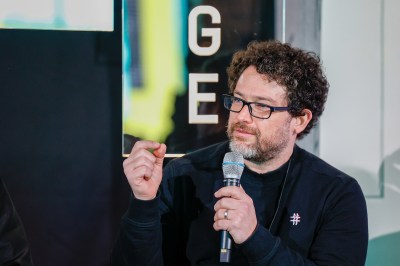
Erick Calderon, Founder and CEO, Art Blocks.
FOX Image Collection via Getty Images
It is true that, say, Winkelmann and Calderon represent obvious figures within the boom market of that moment, though others like Dmitri Cherniak, Prince Jacon Osinachi Igwe, Sarah Meyohas, or the collective and creative platform DADA could have widened the lens on the impact of surging interest in NFTs and offered a more global perspective. For example, Cherniak is a leading artist who donated the revenue from Dead Ringers: Edition in February 2022 to the NYC Food Bank, providing 16 million meals (a value of approximately $3 million); Osinachi is a Nigerian artist whose work celebrates LGBTQ people in a nation with some of the harshest anti-gay laws and who launched an incubator to help onboard others into digital art; Meyohas produced Bitchcoin in 2015, before Ethereum, and garnered renewed interest in fractionalized work and her market; DADA was created by Judy Mam and Beatriz Ramos to connect participants through a shared digital drawing practice, which developed into an exercise in “the Invisible Economy” that seeks to distribute funds to the community as basic income.
Citations in Token Supremacy are sometimes peculiar and often unclear. Small never cites Zsofi Valyi-Nagy on Vera Molnar, though she is very likely the leading scholar on the artist, nor Amy Whitaker, a prominent author on the art market with research as early as 2019 exploring blockchain use cases for art. Though the book’s interviews are initially introduced with date and place, when interspersed with information and quotes from other articles, it becomes difficult to discern Small’s contributions from the established information. For example, in Chapter 3, they recount the heist of 309 CryptoVenetians from the Bright Moments DAO and gallery, but despite having spoken to participants, the tale seems largely cobbled together from Matthew Leising’s three-part series for Decential Media. In Chapter 2, Small tells the Berlin backstory of the dispute surrounding the first NFT and the McCoys’ Quantum, but this was explored in reporting during the court case. In addition, they write in this section that Sotheby’s head of digital art Michael Bouhanna’s “poor skills of observation and historical knowledge about digital art would push the NFT market towards destruction.” Whatever one may think of Bouhanna or the auction houses, that description seems like overreach.
Sometimes quotes from articles misrepresent the speaker and the article’s original context. At the height of the NFT boom in March 2022, critic Blake Gopnik wrote in the New York Times that Tina Rivers Ryan, then-curator of the Buffalo AKG Art Museum and now editor-in-chief of Artforum, suggested that “the new world of tokens may instead bring about ‘an impoverishment — and not just of digital art, but of art full stop, because it reduces art to being a frictionless commodity,’” with that quote within his text being hers. Small shifts Gopnik’s moderate sounding “may instead bring about” to a definitive and indicative present tense: “NFTs are “an impoverishment…”” This alters Ryan’s likely intent, given that she continues in Gopnik’s article to point out good examples of presenting NFT art. This is the kind of confusion that mitigates confidence in the book overall.
The lack of citations around certain claims becomes more problematic when alluding to major museums: “The investors who had spent lavishly during the bull market had drained their accounts, leading to embarrassing situations when these crypto ‘millionaires’ who pledged generous donations in exchange for seats on acquisition committees at museums like the Whitney and the Los Angeles County Museum of Art were booted after failing to pay their dues.” In answering questions about this, Angela Montefinise, the Whitney chief communications officer, explained in an email: “At the Whitney, acquisition committee members are invited based on their expertise. We have not had anyone removed from our acquisition committees for any reason, including failing to pay dues. This has not happened.” Similarly, Jessica Young, director of communications for LACMA wrote in an email, “This claim about the museum is absolutely not true and does not align with the standards of the acquisition committee and our institution.”
(Small, for their part, told ARTnews in an email, “That is contrary to what members of their own museum boards told me in the course of reporting this story.”)
Nevertheless, art and money, which are seemingly accessible to anyone, have this elusive quality that cultivates a kind of voyeurism; good narratives allow us behind the veil. Readers will find titillating moments. There are beautiful sentences in which meaning is not particularly important: “There in the digital filing cabinet is a sleepless delirium, an insomnia that turns the art-money into a parade of hallucinations that dance on the fence posts dividing perception and imagination.” Some art world readers will wonder why basics, like the Venice Biennale, are being explained, but may want greater detail on the regulatory blockades, given the ongoing discomfort with increased Know Your Customer and Anti-Money Laundering regulations overseas. Some general audiences may wonder why those museums that famously did collect NFTs during this period aren’t examined in greater depth.
But, as Small writes, “the best strategy for fooling wealthy people into buying art is to make them feel insecure before throwing economic data in their face.” There are a lot of facts and data thrown about in Token Supremacy but they don’t add up to much. For a moment in art deserving of such a cultural studies perspective, it is unfortunate for all the artists, galleries, museums, investors, critics, and audiences of the period that this book is a crash landing.
In the meantime, two other books have been released this year by participants in the current art economy: On NFTs (Taschen) offers an extensive eye-candy overview of many of the leading artists; and Right Click Save: The New Digital Art Community (Vetro) gathers important essays and interviews by scholars, curators, and pioneering and emerging artists about the global, fiscal, and cultural implications of NFTs. The cultural history, however, is yet to be told.
Editor’s Note, 6/13/2024: A previous version of this review incorrectly identified Small’s description of a dinner with “large burrata salads, wine, and mojitos” ending in “a taxicab headed back uptown” as taking place at an after-party for Erick Calderon’s opening at Venus Over Manhattan. It was actually for a Quantum Art dinner with artist Justin Aversano.
NFTs
RTFKT Announces Project Animus Reveal, Launches Egg Unboxing Event Amid Mixed Reactions | NFT CULTURE | NFT News | Web3 Culture
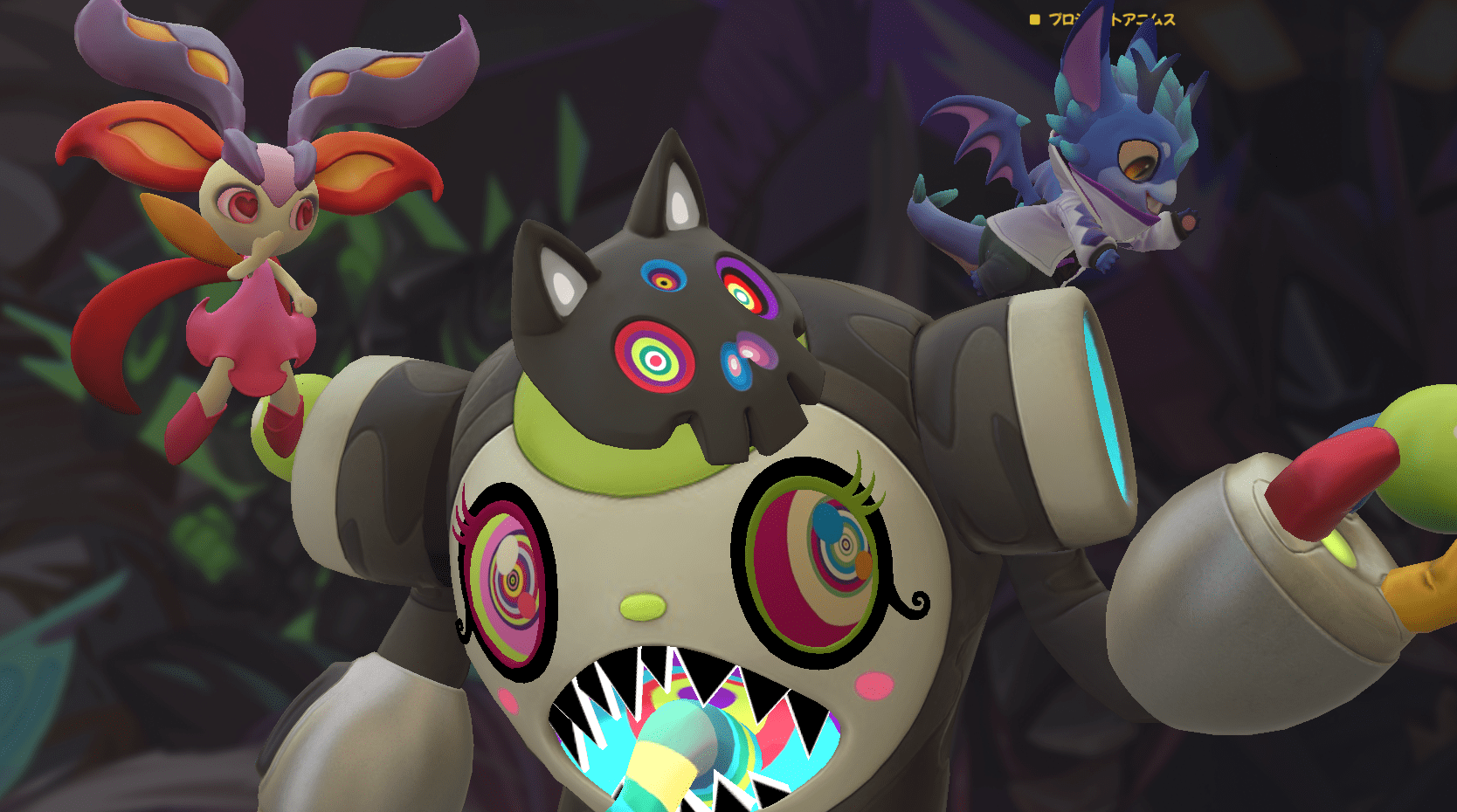
RTFKT, the innovative creator-led company renowned for its cutting-edge sneakers and metaverse collectibles, has officially unveiled its highly anticipated collection, Project Animus. This project marks a significant milestone in RTFKT’s journey, introducing a new dimension to its digital universe after a long period of development. However, the initial market response has been disappointing, with the revealed Animi trading at a floor price of 0.05 ETH, significantly lower than the eggs’ floor price of 0.09 ETH.
The Genesis of the Project Animus
Initially introduced in October 2022, Project Animus introduces a unique ecosystem of digital creatures called Animi. These Animi are designed to enhance Clone X’s avatars, offering an immersive and engaging experience for the community. The recent reveal showcased a diverse range of Animi species, each with distinct design traits and elemental attributes, breaking away from traditional trait-based rarity systems.
A New Digital Frontier: The History and Evolution of Project Animus
The Animus Project is RTFKT’s latest intellectual property, promising to revolutionize the NFT space with its unique digital creatures. The journey kicked off on October 8, 2022, with an interactive teaser event called “The Eggsperience.” This livestream event allowed attendees to explore a virtual Animus Research Facility, generating intrigue and excitement among the community.
Renowned artist Takashi Murakami played a significant role in the project, revealing the first Murakami-themed Animus creature, Saisei, on April 30, 2023. This collaboration added a layer of artistic prestige to the project, further elevating its status within the NFT community.
Animus Egg Incubation: A Journey from Egg to Animi
Clone X NFT holders had the opportunity to claim an Animus Egg until March 1, 2024. This was followed by the Animus Egg Hatching event, which ran from May 7 to June 4, 2024. During this period, holders of several RTFKT NFTs, including Clone X, Space Pod, Loot Pod, Exo Pod, and Lux Pod, were able to use a points-based system to increase their chances of hatching rarer Animi. The limited supply of Project Animus Eggs is capped at 20,000, with no public sale planned.
Mixed market reception
Despite the excitement and innovative features, the market reaction to the reveal of Project Animus has been lukewarm. Animi is currently trading at a floor price of 0.05 ETH, significantly lower than the eggs’ floor price of 0.09 ETH. This discrepancy has led to disappointment among some collectors who had high expectations for the project.
What Awaits Us: The Future of Project Animus
Following the reveal, RTFKT plans to release a collection of exclusive Animus Artist Edition characters. Holders of Clone X Artist Edition NFTs are guaranteed to get one of these special editions. The distribution will include 88 Special Edition Animus, with 8 Mythic (Dragon Sakura), 40 Shiny, and 40 Ghost Animus. The odds of receiving a Special Edition Animus are the same for all Eggs hatched, regardless of the points accumulated.
The remaining Animus characters will be distributed among unhatched Eggs, encompassing Special Edition Animus, as well as Cosmic Animus and Murakami Element from Generation 1, Generation 2, and Generation 3.
Conclusion
RTFKT’s Project Animus represents a bold step forward in the NFT space, combining cutting-edge technology with artistic collaboration to create an immersive and innovative digital ecosystem. However, the initial market reception highlights the challenges of living up to high expectations in the ever-evolving NFT landscape. As the project continues to evolve, it promises to deliver unique experiences and opportunities for its community, solidifying RTFKT’s position as a leader in the metaverse and digital collectibles arena.
Summary: RTFKT has unveiled Project Animus, introducing a unique ecosystem of digital creatures called Animi designed to enhance Clone X avatars. Despite the excitement, market response has been mixed, with Animi trading at a lower floor price than eggs. The project kicked off with an interactive event in October 2022, featuring collaborations with artist Takashi Murakami. Following the reveal, RTFKT will release special edition Animus characters. The total supply of Animus Eggs is limited to 20,000, with no public sale planned.
NFTs
The Olympics have reportedly ditched Mario and Sonic games in favor of mobile and NFTs

The long and historic partnership between Nintendo and Sega to create video games for the Olympics reportedly ended in 2020 as event organizers sought opportunities elsewhere.
Lee Cocker, who served as executive producer on several Mario & Sonic Olympics titles, said Eurogamer the International Olympic Committee let the licensing agreement lapse because it “wanted to look at other partners, NFTs and esports.”
“Basically, the IOC wanted to bring [it] “Turn inward and look for other partners so you can get more money,” Cocker added.
The 2024 Summer Olympics kicked off in Paris last week, but there were no Mario & Sonic games available in time for the event to begin – the first time this has happened since the original release in 2007 to coincide with the 2008 Beijing Summer Olympics.
Over the past two decades, there have been four Mario and Sonic adaptations for the Summer Olympics, as well as two for the Winter Olympics.
This year, instead of a Nintendo/Sega title, the IOC released Olympics Go! Paris 2024, a free-to-play mobile and PC title developed by nWay, which has worked on several Power Rangers games.
Olympics Go! allows players to compete in 12 sports and unlock NFTs from the Paris 2024 digital pin collection.
The original Mario & Sonic at the Olympic Games was announced in March 2007 and marked the first time the two mascots – once archrivals in the console wars of the 1990s – appeared together in a game.
NFTs
DraftKings abruptly shuts down NFT operation, leaving collectors panicking over vast holdings of digital tokens
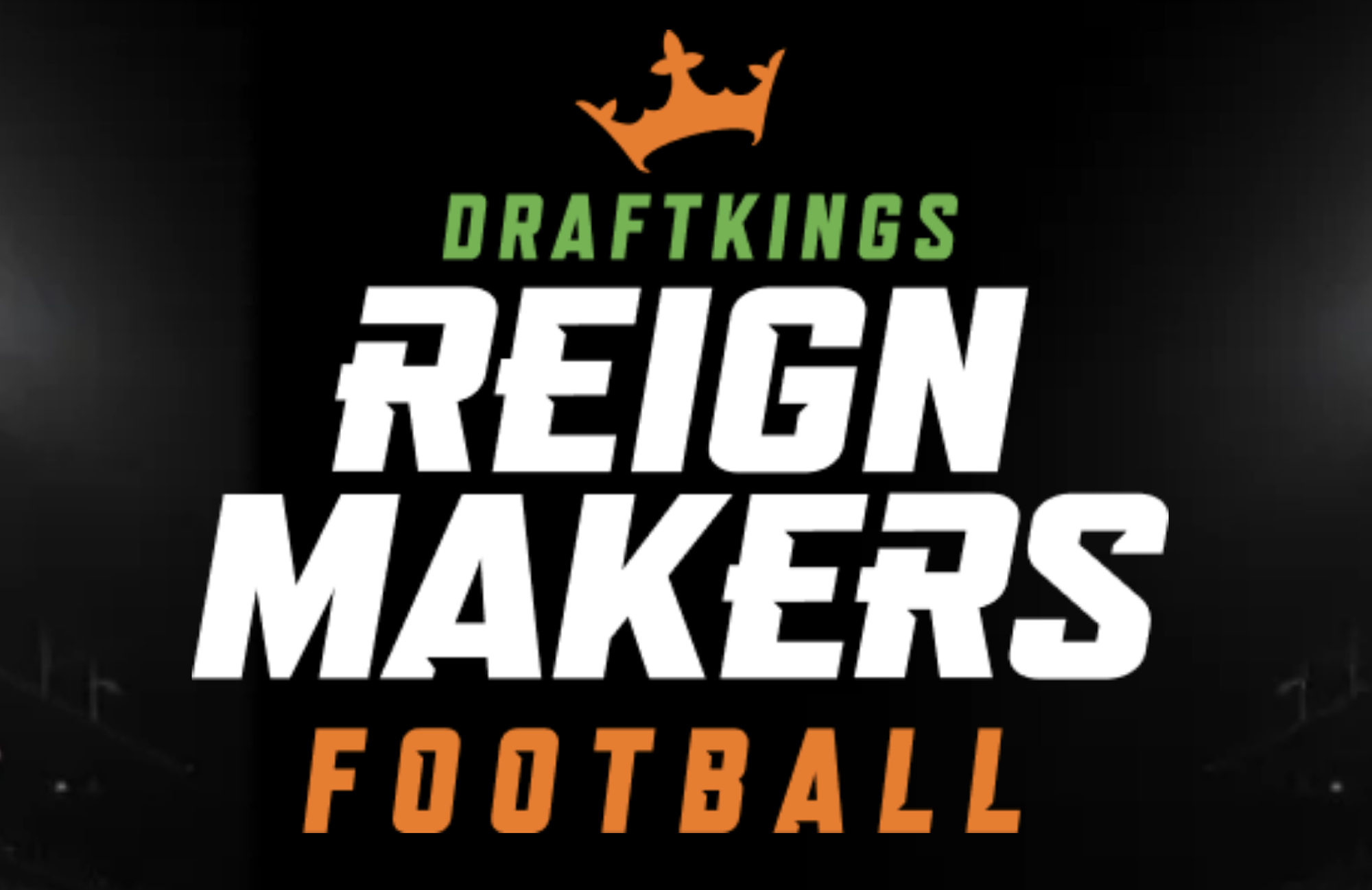
DraftKings, the daily fantasy sports and sports betting company, abruptly shut down a program called Reignmakers on Tuesday, posting a notice on its website and associated app and sending a mass email to some subset of its user base. Reignmakers, which the company launched in 2021, offered pay-to-play competitions in NFL football, PGA Tour golf and UFC mixed martial arts. The decision to eliminate the entire program, DraftKings says, was not made lightly but was forced “due to recent legal developments.”
DraftKings has yet to specify what “recent legal developments” are troubling its now-dead Reignmakers product. The company was sued in U.S. District Court in 2023 by a Reignmakers player named Justin Dufoe, who accuses the company of dealing in unregistered securities, taking advantage of relatively unsophisticated “retail investors,” and failing to market and support Reignmakers to the degree necessary to return to its users the financial benefits expected. DraftKings filed a motion in September to dismiss Dufoe’s complaint, but that motion was denied on July 2. A scheduling conference was held by the parties on July 29; Reignmakers was permanently shut down on July 30. A DraftKings spokesperson reached by Defector on Wednesday declined to confirm whether Dufoe’s complaint is the “recent legal development” that forced the company’s hand.
Users of the Reignmakers NFL product, who in recent days began murmuring on social channels about a notable lack of DraftKings activity so close to the start of the NFL preseason schedule, were caught off guard and, in some cases, devastated by the news. Members of the DraftKings Discord server, where all Reignmakers-related channels were abruptly shut down and locked following the announcement, flooded a general channel in various states of panic, sharing news, theorizing, lamenting, and, in some cases, openly worrying about whether it would be possible to recoup any decent fraction of the genuinely impressive sums of money they had invested in this DraftKings product.
Reignmakers is nominally a daily fantasy contest—users build lineups of players and then pit those lineups against other users’ lineups for cash prizes—but it’s actually a distributor of nonfungible digital tokens (NFTs), originated and sold by DraftKings, and then frequently resold on a dedicated secondary marketplace also hosted by DraftKings. At the lineup-building level, Reignmakers functions like a card-collecting game, with artificial scarcity driving the prices of the most coveted cards to insane, eye-popping heights. Reignmakers NFTs are tiered and offered in timed drops designed to heighten the sense of scarcity. A user can enter a lower-tier contest using a collection of NFTs that may have cost a few hundred dollars in total (or that were earned by purchasing random packs of NFTs that offer generally low odds of scoring top assets) and throw their lot in with hundreds of casual users competing for relatively unimpressive rewards. Random packs at the lowest tier would have prices as low as a few dollars; mid-tier cards—Star and Elite tiers, I’d guess—could cost a player upwards of $1,000.
But players interested in hunting down the biggest payouts, not just from games but from leaderboard prizes and other assorted prizes, would need to enter higher-tier games, and to enter the higher-tier games, a user’s collection needed to include higher-tier NFTs. DraftKings ensured that these cards were extremely scarce and could only be purchased directly on the marketplace at prices that any reasonable person would consider utterly insane.
For example, the highest-tier Reignmaker contests (called the Reignmakers tier, of course) have in the past been limited to listings with at least two of the highest-tier, rarest NFTs (also the Reignmaker tier) plus three NFTs from the second-highest tier (Legendary). NFTs at these tiers are expensive. Not just expensive in the way that, like, a steak dinner is expensive, but expensive in the way that buying even one of them should trigger a mandatory visit to a gambling addiction counselor, if not sirens and a straitjacket. Back in 2022a Reignmaker-level Ja’Marr Chase NFT from something called the Field Pass Promo Set could be purchased directly from the DraftKings Reignmaker Marketplace for a whopping $32,100.
Reignmakers users purchased NFTs at various levels with the expectation that owning them would convey better odds of winning contests hosted on DraftKings. This was the gamification element of Reignmakers, which emerged several months after DraftKings began trading and minting its NFTs. But as with all NFTs, a very large part of the real appeal for its buyers was the expectation, however insane, that these worthless, virtually worthless, infinitely duplicable digital images would increase in value over time. Now that both the Reignmakers game and the Reignmakers marketplace have been shut down, Reignmakers NFT holders are worried that their investments may have suddenly lost all monetary value. One Discord user described Tuesday as “a bad day to wake up and realize you have $2,000 worth of unopened NFL Rookie Packs”; Another user asked the group if they should expect “a refund” on the $10,000 they’ve already spent on Reignmakers NFTs this year. A pessimistic Reddit user posted tuesday that they would sue DraftKings if they were forced to take a total loss on a Reignmakers NFT collection worth approximately $100,000.
The game (scam?) was built to make numbers like these not only possible, but somewhat easily achievable. A user who intended to compete from a position of strength in multiple overlapping high-profile contests at the same time, and who had been in the blockchain madhouse for a period of years, could easily have spent six figures on Reignmakers NFTs. DraftKings used non-gaming incentives to entice players to spend more and more money, much like casinos give away free suites to players who over-bet on blackjack. Another Reddit user lamented the loss of the additional prizes and ranking bonuses he had hoped to earn in the upcoming NFL season by having a portfolio of NFTs that had reached the highest levels of value and prestige. “I was already loaded up on 2024 creation tokens and rookie debut cards,” said this Reignmakers userwho claimed his portfolio was finally “close to the top 250 overall.”
Dufoe’s complaint says the NFTs minted by DraftKings for Reignmakers qualify as securities, function like securities, and should be regulated as securities. In its motion to dismiss, DraftKings attempted to position its NFTs as game pieces — eye-wateringly expensive, yes, but essentially the same thing as Magic: The Gathering cards or Monopoly hotels. The court, in resolving these arguments, applied what’s known as “the Howey test,” referencing a case from 1946 in which the U.S. Supreme Court established a standard for determining whether a specific instrument qualifies as an investment contract. Judge Dennis J. Casper, in ruling against DraftKings’ motion, concluded that Dufoe could plausibly argue that Reignmakers’ NFT transactions represent “the pooling of assets from multiple investors in such a manner that all share in the profits and risks of the enterprise,” arguing that DraftKings’ absolute control over the game and marketplace effectively binds the financial interests of the company and the buyers, the latter of whom depend on the viability of both for their NFTs to retain any value.
Reignmakers users are different from Monopoly players in at least one crucial way: A person who buys a Monopoly board has no expectation from Hasbro that those little red and green pieces will appreciate in value. It’s a game! No matter what any hysterically conflicted party may say to the contrary, that’s not what NFT collecting is. DraftKings had been selling Reignmakers NFTs for months before they were gamified, and Dufoe, in his complaint, cites public comments made by DraftKings spokespeople that seem to explicitly position Reignmakers NFTs as assets with independent monetary value beyond their utility in Reignmakers contests. Judge Casper, in his ruling on the motion to dismiss, cites a Twitter account associated with a podcast run by DraftKings CEO Matthew Kalish, who in a tweet described NFTs as “the opportunity to invest in startups, artists, operations, and entrepreneurs all at once.” This is probably the kind of thing that NFT peddlers should stop saying. This advice assumes, of course, that NFTs will continue to exist as instruments on the other side of this and other lawsuits.
DraftKings has posted a worryingly sparse FAQ at the bottom of the your ad Tuesday, anticipating but largely failing to address questions from players who see this as yet another in a long line of brutal blockchain rug pulls. In a hilarious reversal of existing Reignmakers policy, Reignmakers users are now allowed by DraftKings to withdraw their Reignmakers NFTs from their DraftKings portfolios and into their personal NFT wallets, where those NFTs will have precisely zero value, to anyone, for the rest of all time. There’s also vague language about Reignmakers users having the option to “relinquish” their NFTs back to DraftKings in exchange for “cash payments,” subject to “certain conditions” and according to an as-yet-unspecified formula that will take into account, among other things, the “size and quality” of a player’s collection.
Reignmakers users are not optimistic. Those who claim to have been victims of other blockchain market crashes are warning their peers on Discord and Reddit to expect payouts that amount to pennies on the dollar; in the absence of any clarifying information, users are unsure whether cashing out their NFTs from Reignmakers to their personal NFT wallets, for reasons that completely pass any and all understanding, would effectively preclude the possibility of delivering these silly digital tokens back to DraftKings. It remains to be seen what exactly DraftKings has in mind with the “certain conditions” attached to the delivery process. There is much that has yet to be resolved. A DraftKings spokesperson contacted by Defector indicated that more time would be needed to answer a list of specific questions and issued a statement noting that it is “in DraftKings’ DNA to innovate and disrupt to provide the best possible gaming experiences for our customers.” The original complaint is embedded below.
Do you know anything about the demise of Reignmakers, either from the consumer side or from the DraftKings side? We’d love to hear from you. Get it in touch!
Recommended
NFTs
There Will Be No More ‘Mario & Sonic’ Olympics Because of NFTs

Nintendo and SEGA have been teaming up with the Olympics for several years now in the popular Mario & sonic in the Olympic Games series, but a new report claims the International Olympic Committee has abandoned the series in favor of new deals in eSports and NFTs.
According to Eurogamer“A veteran behind the series,” Lee Cocker, told the outlet that the IOC chose not to renew its license with SEGA and Nintendo, letting it expire in 2020. “They wanted to look at other partners and NFTs and eSports,” Cocker told Eurogamer. “Basically, the IOC wanted to bring [it] turn inward and look for other partners so they could get more money.”
Mario & Sonic at the Olympic Games is a series that has been running since 2008, with six main games covering the regular and Winter Olympics. In the games, players could control various characters from the Mario and Sonic franchises and compete in Olympic sporting events.
It’s no secret that NFTs are a big part of this year’s Paris 2024 Olympics. Olympics Go! Paris 2024 is a mobile and mobile-connected game your site states that players can “join the excitement of the Paris 2024 Olympic Games with nWay’s officially licensed, commemorative NFT Digital Pins collection honoring Paris 2024!”
As for eSports, Saudi Arabia will host the ESports Olympic Games in 2025. This is part of a partnership with the Saudi National Olympic Committee (NOC) that is expected to last for the next 12 years and is expected to feature regular events.
IOC President Thomas Bach said: “By partnering with the Saudi NOC, we also ensure that Olympic values are respected, in particular with regard to the game titles on the programme, the promotion of gender equality and the engagement with young audiences who are embracing esports.”
In other news, Someone claimed they’re suing Bandai Namco because Elden Ring is too difficult.
-

 News11 months ago
News11 months agoMore Crypto AI Alliances Emerge Following $7.5 Billion Token Merger — TradingView News
-

 News11 months ago
News11 months agoOver 1 million new tokens launched since April
-

 Memecoins8 months ago
Memecoins8 months agoMemecoins dominate major derivatives in terms of open interest | Flash News Detail
-

 Altcoins11 months ago
Altcoins11 months agoAltcoin Investments to create millionaires in 2024
-

 News8 months ago
News8 months agoInvest Now: The Hottest New Cryptocurrencies of August 2024 That Could Skyrocket
-
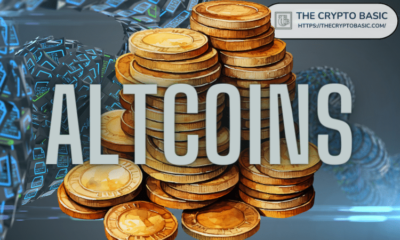
 Altcoins8 months ago
Altcoins8 months agoOn-chain data confirms whales are preparing for altcoin surge with increased buy orders
-
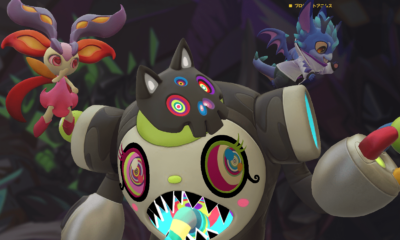
 NFTs8 months ago
NFTs8 months agoRTFKT Announces Project Animus Reveal, Launches Egg Unboxing Event Amid Mixed Reactions | NFT CULTURE | NFT News | Web3 Culture
-
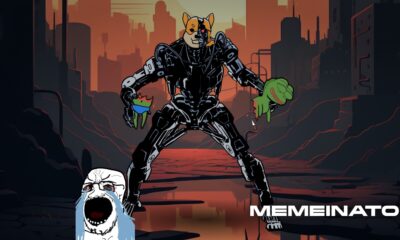
 Altcoins8 months ago
Altcoins8 months agoHot New Altcoin: Memeinator’s Price Upside Potential in July
-

 Videos11 months ago
Videos11 months agoMoney is broke!! The truth about our financial system!
-

 Memecoins11 months ago
Memecoins11 months agoChatGPT Analytics That Will Work Better in 2024
-
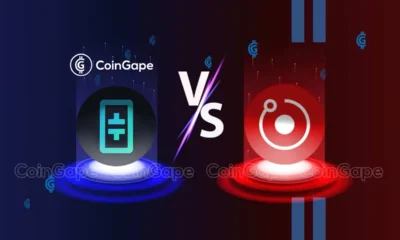
 Altcoins11 months ago
Altcoins11 months agoRender vs. Theta; Which DePIN Altcoin to buy in May
-

 News10 months ago
News10 months ago5 Crypto Airdrops After Notcoin to Watch Out for in June 2024









